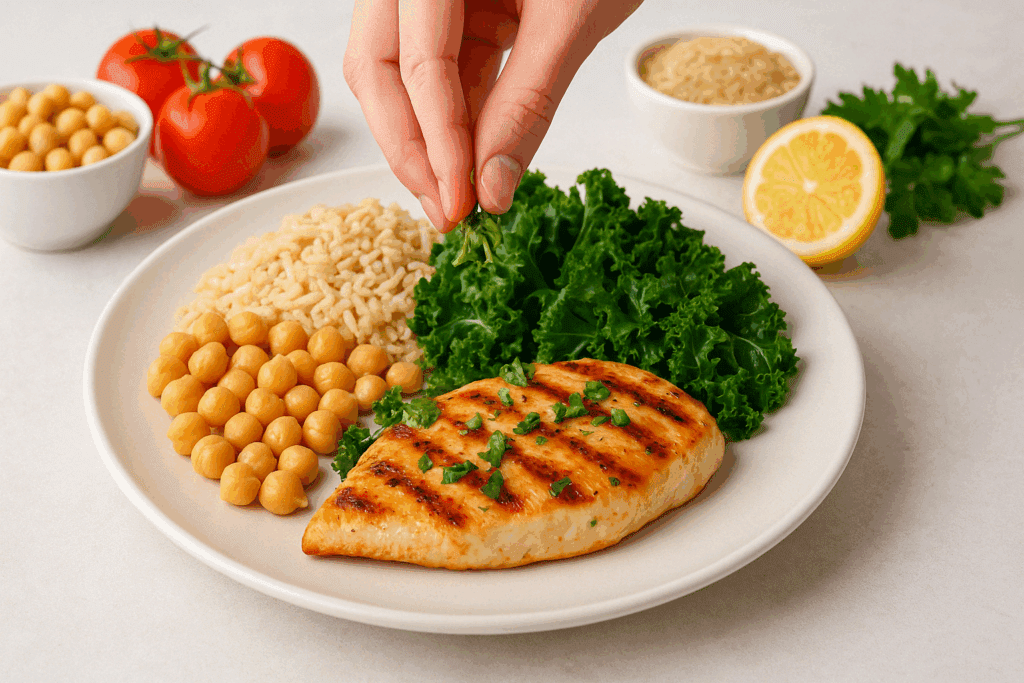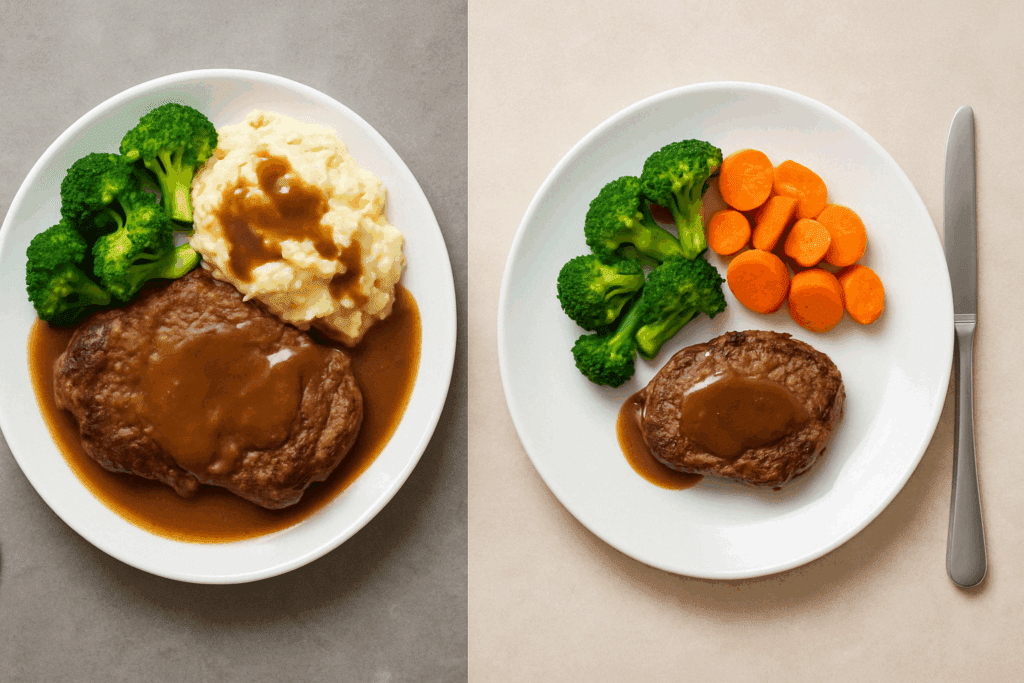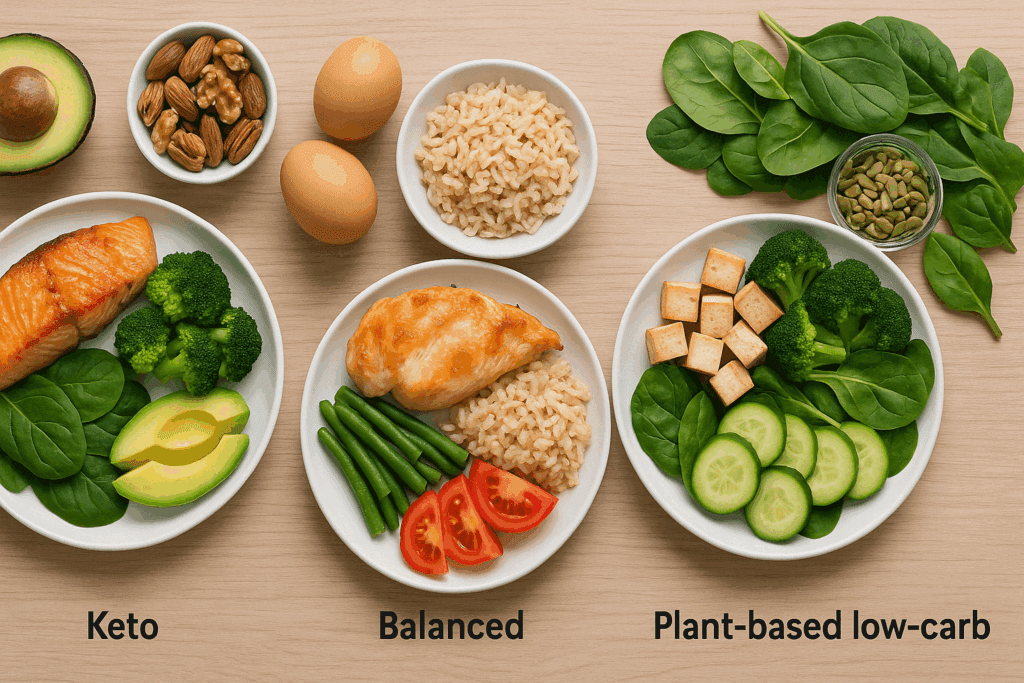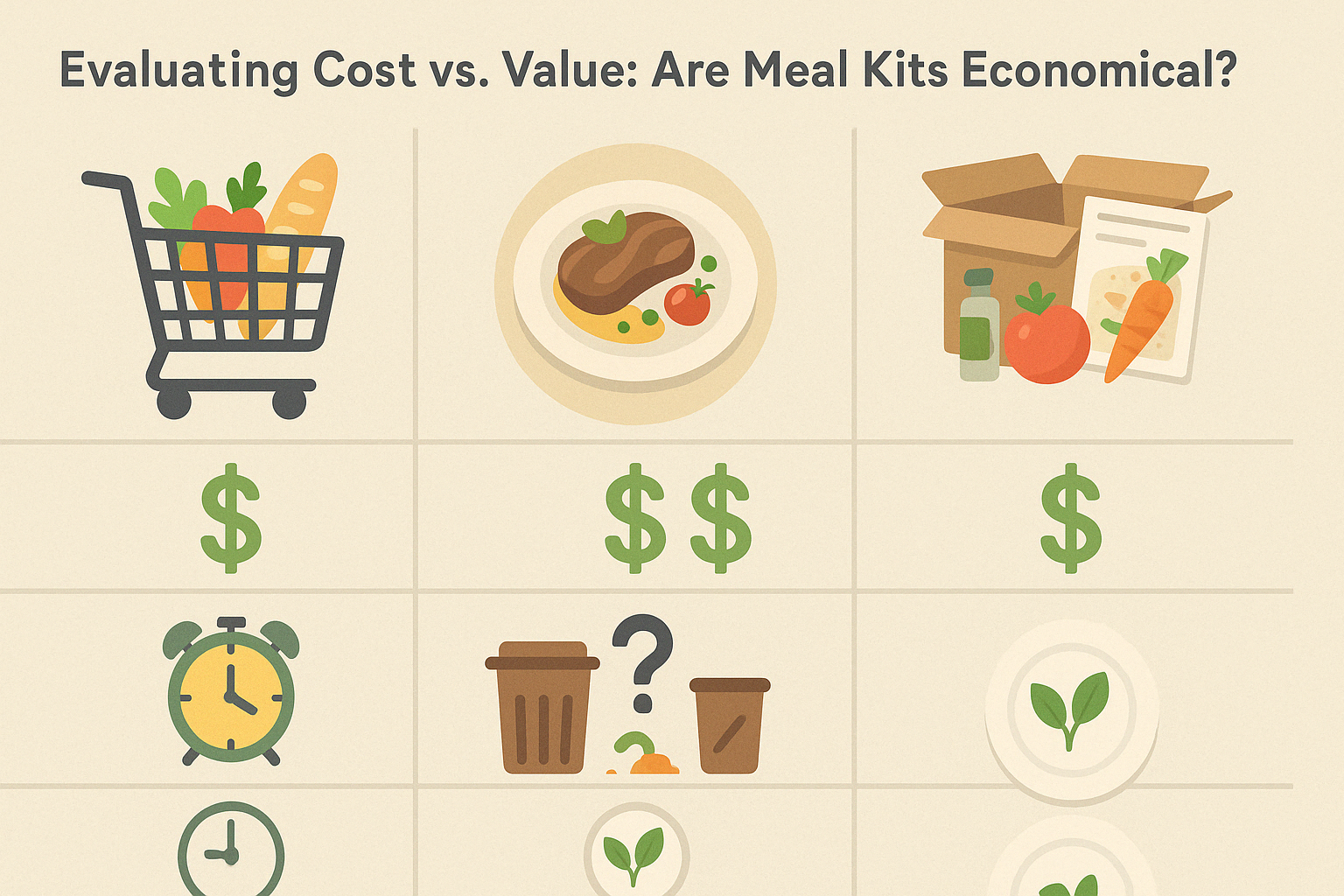In the evolving landscape of health-conscious eating and time-saving convenience, monthly meal subscriptions have carved out a substantial niche. Once a novelty reserved for tech-savvy foodies, these services have grown into mainstream lifestyle solutions for busy professionals, health enthusiasts, and families alike. But are they truly worth the investment? This article takes a comprehensive look at the nutritional impact, portion control benefits, and financial value of monthly meal subscriptions, while also highlighting the best meal kit deals for consumers navigating the bustling marketplace.
You may also like: Smart Meal Prep for Weight Loss: Expert-Approved Lunch Ideas and Recipes to Stay on Track
The Rise of Monthly Meal Subscriptions: Convenience Meets Customization
Over the last decade, monthly meal subscription services have experienced explosive growth, driven by increasing demand for healthier, home-cooked meals without the burden of grocery shopping or meal planning. Companies like HelloFresh, Blue Apron, and Green Chef have revolutionized how people interact with food, offering pre-measured ingredients and chef-designed recipes that align with a variety of dietary preferences, including vegan, vegetarian, keto, and gluten-free.
Consumers are drawn to the idea of simplifying meal preparation while maintaining control over ingredients and nutritional value. Unlike takeout or fast food, meal kits provide a structured experience that encourages healthier cooking habits. They eliminate food waste by supplying exact quantities, reduce impulse purchases, and introduce users to new culinary techniques and ingredients.

Nutrition in Focus: Are Meal Kits Actually Healthy?
Nutritional quality is a cornerstone of mindful eating, and meal kits have responded by emphasizing whole, fresh, and minimally processed ingredients. Many services now include calorie counts, macronutrient breakdowns, and nutritional labels, enabling users to make informed dietary choices. This level of transparency aligns well with the principles of whole-food, plant-based nutrition, which prioritizes unprocessed foods, lean proteins, and fiber-rich vegetables.
However, not all meal kits are created equal. While some prioritize organic produce and sustainable sourcing, others may rely on sauces or dressings with added sugars, sodium, or preservatives. Evaluating a service’s ingredient lists and sourcing policies can help consumers identify which options align with their health goals. Registered dietitians often recommend choosing subscriptions that offer a balance of complex carbohydrates, lean proteins, and healthy fats, especially for those seeking long-term wellness benefits.
Portion Control and the Psychology of Serving Size
One of the most underappreciated advantages of a monthly meal subscription is portion control. Many people unknowingly consume oversized servings when cooking independently or dining out, which can lead to caloric excess and unintentional weight gain. Meal kits, by contrast, are designed with portion consistency in mind. The standardized quantities help users become more aware of what a balanced meal looks like, promoting healthier eating habits over time.
Proper meal kit portion size plays a crucial role in supporting weight management, metabolic health, and even digestive wellness. By reinforcing appropriate serving sizes, meal subscriptions can teach lasting lessons about nutritional mindfulness. This structure is particularly valuable for those transitioning to new diets or trying to break free from patterns of emotional or mindless eating.

Evaluating Cost vs. Value: Are Meal Kits Economical?
The financial aspect of a monthly meal subscription often sparks debate. On the surface, $10 to $15 per meal may appear steep compared to home-cooked alternatives. However, a deeper cost-benefit analysis reveals several layers of value. First, meal kits save time—a commodity that’s increasingly precious. For busy individuals, the convenience of skipping grocery trips and avoiding decision fatigue can be worth the premium.
Second, meal kits reduce food waste by delivering only what is needed. Traditional grocery shopping often results in leftover ingredients that spoil before use, which contributes to both environmental impact and financial inefficiency. Subscriptions mitigate this risk while fostering sustainable consumption practices.
Third, promotions and the best meal kit deals can significantly lower the cost. Many companies offer introductory pricing, referral discounts, or loyalty incentives that make these services more accessible. Savvy consumers can capitalize on these opportunities to experience high-quality meals at a fraction of retail cost.
Meal Kits and Special Diets: A Look at Keto, Low Carb, and More
Many subscription services now tailor offerings to fit specialized diets, including keto and low-carb plans. This has opened the door for individuals exploring dietary changes to test new habits with minimal commitment. Understanding the differences between a ketogenic diet vs low carb is essential in choosing the right subscription plan.
The ketogenic diet is a high-fat, very low-carbohydrate regimen designed to shift the body into ketosis, a metabolic state that burns fat for fuel. In contrast, a low carb diet allows for a broader range of carbohydrates, prioritizing complex carbs while still reducing overall sugar intake. When evaluating keto diet vs low carb diet offerings, it’s important to assess the macronutrient composition and ingredient quality.
Some meal kits labeled as “keto” may include processed ingredients or lack fiber, which can undermine the diet’s potential benefits. Consumers should ask: Is keto a low carb diet that suits my long-term health goals? Or is a more balanced low carb diet the better fit? This nuanced distinction can influence not only nutritional outcomes but also adherence and satisfaction.

Is Keto a Good Diet for Everyone?
While the popularity of the ketogenic diet has soared in recent years, it’s not universally suitable. The high fat content, often derived from animal sources, may conflict with plant-based health principles and raise concerns for those with cardiovascular risk factors. Additionally, the restrictive nature of the diet can be challenging to sustain.
That said, some meal kits offer plant-based keto or low carb options that strike a balance between metabolic support and nutritional completeness. When evaluating whether is keto a good diet for your needs, it’s important to consult a healthcare professional, particularly if you have underlying health conditions. Flexibility, sustainability, and nutrient density should all factor into the decision.
Exploring Sustainability: Environmental and Ethical Dimensions
Meal subscription services are increasingly embracing sustainability as a core value. Many brands are minimizing packaging waste, sourcing ingredients from local or organic farms, and offering carbon offset programs. This focus on environmental responsibility resonates with consumers seeking to align their food choices with planetary health.
Reducing food waste is another critical component. Traditional food systems often result in surplus or spoiled products. By contrast, the made-to-order nature of meal kits curbs this problem significantly. As consumers become more eco-conscious, evaluating a subscription’s environmental impact becomes an important criterion for determining its overall worth.
From a health perspective, plant-forward meal kits also support a more sustainable food model. Shifting even partially toward plant-based eating reduces greenhouse gas emissions, conserves water, and promotes biodiversity. For many, the question of “is a keto diet sustainable” extends beyond the personal to encompass broader ecological concerns.

Time-Saving and Skill-Building Advantages
One of the most tangible benefits of monthly meal subscriptions is the time savings they offer. For individuals juggling careers, caregiving, and social obligations, eliminating the burden of meal planning and grocery shopping can reclaim hours each week. This convenience supports healthier lifestyle choices, as people are less likely to resort to takeout or ultra-processed options when nutritious meals are within reach.
Moreover, meal kits serve as educational tools. Recipes often include step-by-step instructions and cooking tips that empower users to improve their culinary skills. Over time, users become more confident in the kitchen and may feel inspired to replicate recipes or experiment independently. This long-term skill-building differentiates meal subscriptions from passive convenience options like fast food or ready-made frozen meals.
Incorporating Mindful Eating Practices
Mindful eating involves paying close attention to hunger cues, food quality, and the sensory experience of meals. Monthly meal subscriptions support this practice by encouraging intentional preparation and consumption. Unlike the rushed nature of dining out or eating on the go, meal kits invite users to slow down and engage with their food.
This heightened awareness can reduce overeating, enhance digestion, and improve overall satisfaction. Mindful eating also fosters gratitude and a deeper connection to ingredients, which can strengthen motivation for continued healthy habits. Services that prioritize whole ingredients and nutrient-rich recipes align especially well with this approach.
Comparing Services: Finding the Best Meal Kit Deals
The competitive meal kit market offers numerous choices, each with unique strengths. Some focus on gourmet, restaurant-style meals, while others cater to specific dietary patterns or affordability. Identifying the best meal kit deals requires evaluating cost, customization options, ingredient quality, and customer support.
Many services offer substantial discounts for first-time users, sometimes reducing per-meal prices by up to 50%. Others provide ongoing promotions for students, families, or military personnel. Signing up during seasonal campaigns or referring friends can further reduce costs. Comparing these offers allows consumers to maximize value without compromising on nutrition or convenience.
To truly determine if a monthly meal subscription is worth it, prospective users must weigh these financial incentives against their personal goals and lifestyle constraints. For some, the convenience alone may justify the expense, while for others, a focus on nutrition or sustainability may be the driving force.
The Interplay of Diet Trends: Is Keto No Carbs or Low Carb?
A frequent point of confusion in dietary circles is whether keto equals no carbs. The phrase “is keto no carbs” often arises in online searches, reflecting widespread curiosity. In reality, while keto is a very low-carb diet, it does not eliminate carbohydrates entirely. Most ketogenic plans allow for 20 to 50 grams of net carbs per day, derived from vegetables, nuts, and low-glycemic fruits.
Understanding this nuance is vital when choosing a meal kit labeled as keto. Consumers should not assume that “no carb” means zero carbs, nor should they interpret it as license to exclude fiber-rich vegetables. Instead, the best keto meal plans focus on high-quality fats, moderate protein, and nutrient-dense, low-carb produce.
This balanced approach is more sustainable and often yields better health outcomes than extreme restrictions. As always, individual needs and goals should dictate dietary choices, guided by credible health information and professional advice.
Why Portion Control Matters in Every Diet
Regardless of whether you follow a low carb, keto, plant-based, or omnivorous diet, portion control remains a central tenet of effective nutrition. Overeating healthy food can still lead to weight gain or metabolic issues. Meal kit portion size helps reinforce limits that align with daily caloric needs and nutritional balance.
Learning to recognize and internalize proper portions can be transformative. It shifts the focus from calorie counting to intuitive eating, empowering individuals to make better choices even outside of structured meal kits. By supporting consistency and moderation, subscriptions can serve as a stepping stone to lifelong healthy habits.
The Verdict on Value: Is a Monthly Meal Subscription Worth It?
Ultimately, the decision to invest in a monthly meal subscription depends on personal priorities. For individuals seeking convenience, structure, and dietary support, these services offer a compelling solution. They promote healthier eating, streamline decision-making, and foster valuable kitchen skills. For those managing specific dietary goals, such as low carb or keto, subscriptions provide curated options that align with nutritional needs.
However, not all services deliver equal value. Discerning consumers should evaluate ingredients, meal kit portion size, and long-term sustainability when making a selection. Factoring in the best meal kit deals and promotional offers can enhance affordability and maximize return on investment.
For those exploring dietary transitions or managing chronic conditions, subscriptions offer a safe and manageable way to test new patterns. Whether you’re wondering “is keto a good diet” or seeking variety in a plant-based lifestyle, meal kits provide a guided, adaptable framework. In this light, they become more than just a convenience—they become a partner in your health journey.

Frequently Asked Questions: Monthly Meal Subscriptions, Portion Control, and Finding the Best Meal Kit Deals
1. Can a monthly meal subscription support long-term dietary adherence?
Absolutely. A monthly meal subscription provides consistent exposure to structured meal plans, whichsupports behavioral reinforcement over time. By reducing decision fatigue and minimizing the need for frequent grocery shopping, it enables users to stick with healthy habits more easily. This sustained pattern makes it easier to meet fitness, weight loss, or dietary goals, especially for those who struggle with maintaining routines. Moreover, when meal kits reflect your individual preferences, the personalization can deepen engagement. Subscriptions that incorporate diverse recipes also help reduce food boredom, which is a common reason people abandon healthful eating regimens.
2. How do meal kit portion sizes compare to standard restaurant servings?
Meal kit portion size is typically smaller and more nutritionally balanced than what you might find at arestaurant. While dining out often encourages overeating due to oversized portions, meal kits are pre-measured to align with recommended dietary guidelines. This structure promotes portion awareness, which can lead to healthier eating both during and outside of meal kit use. Additionally, kits often include educational prompts or visuals that help users recognize how much food they truly need to feel satisfied. Over time, this mindful approach retrains appetite cues and builds more accurate expectations about ideal serving sizes.
3. Are there psychological benefits to using a monthly meal subscription?
Yes, the benefits extend beyond convenience and nutrition. A monthly meal subscription can reducecognitive load, allowing users to focus on other wellness goals like sleep, fitness, or stress management. This relief from “what’s for dinner?” anxiety can improve overall mental health and support a more positive relationship with food. Users also report increased self-efficacy as they develop cooking skills through guided recipes. By creating a predictable structure, these services contribute to emotional regulation, especially for individuals navigating busy or high-stress lifestyles.
4. How can I evaluate the best meal kit deals without being misled by marketing?
To identify the best meal kit deals, compare more than just the upfront cost. Consider factors likeingredient quality, variety of meals, ease of preparation, delivery consistency, and flexibility in skipping or canceling. Look for services with transparent nutritional labeling, strong customer reviews, and an emphasis on sustainable sourcing. Many companies offer introductory discounts, but the real value lies in the ongoing quality and adaptability of the service. Signing up for multiple trial offers across brands can provide a firsthand comparison before committing to a longer-term plan.
5. Can families benefit from meal kit portion sizes, or are they too small for shared dining?
While meal kit portion size is tailored for individual or couple servings, many services now offerfamily-sized plans. These versions typically feed four or more people per recipe and include child-friendly meal options. For larger households, combining two subscriptions or adjusting plans to suit varying appetites is a practical workaround. Additionally, family-focused kits often prioritize quick prep time, which can make weeknight dinners more manageable. This flexibility allows meal subscriptions to scale up effectively for diverse household dynamics.
6. Do monthly meal subscriptions accommodate changing dietary needs or restrictions?
Most reputable monthly meal subscription services offer flexible meal plans that can adapt to evolvingdietary needs. Whether you’re shifting from vegetarian to pescatarian, exploring gluten-free living, or managing a new medical condition, you can often update your profile preferences accordingly. Some even allow ingredient exclusions or allergen flags to avoid cross-contamination. Subscription platforms that provide dietitian-designed menus offer the added assurance of nutritional soundness. This adaptability ensures that your subscription evolves with your health journey, maintaining relevance and value over time.
7. How does meal kit portion size influence metabolic health and energy levels?
Eating the appropriate meal kit portion size can help stabilize blood sugar, reduce post-meal crashes,and support steady energy throughout the day. Overeating or undereating—both common with unstructured meals—can negatively affect metabolism and circadian rhythms. Consistent portioning helps regulate hunger hormones like ghrelin and leptin, which are essential for metabolic efficiency. Some users even report improved focus and fewer cravings after switching to meal kits with intentional portion control. Over time, this equilibrium can enhance both physical vitality and cognitive clarity.
8. What are some creative ways to maximize the value of the best meal kit deals?
To get the most out of the best meal kit deals, consider sharing subscriptions with roommates orneighbors to split costs. You can also freeze components from kits you won’t use immediately, extending their shelf life. If you’re trying multiple services, rotate them monthly based on promotional offers to take advantage of ongoing savings. Some users customize their delivery schedules to align with travel or busy periods, preventing food waste. Finally, repurposing leftover ingredients—such as turning extra herbs or sauces into next-day meals—can stretch your investment even further.
9. How do meal subscriptions influence food literacy and culinary confidence?
A monthly meal subscription can significantly enhance food literacy by exposing users to diverseingredients, cooking methods, and flavor profiles. Recipes often include background notes on cultural influences or nutritional highlights, turning dinner into a learning opportunity. This hands-on experience demystifies healthy cooking and empowers users to recreate meals independently. As familiarity grows, subscribers are more likely to experiment with substitutions and personalize recipes, fostering a lifelong relationship with home cooking. These skills are particularly beneficial for those who previously relied on takeout or processed foods.
10. Are there risks associated with relying too heavily on a monthly meal subscription?
While a monthly meal subscription offers many benefits, overdependence can limit spontaneity,cultural exploration, or intuitive eating. If users become overly reliant on pre-portioned meals, they may struggle to apply portion control in unscripted settings like social events or restaurants. It’s also possible to become complacent with trying new recipes beyond the curated selection. To mitigate this, it’s helpful to treat meal kits as a foundational tool, not a permanent crutch. Balancing subscription use with grocery-based cooking can preserve flexibility and nutritional diversity in the long run.

Conclusion: Rethinking Convenience, Nutrition, and Value Through Subscription Meals
As our relationship with food continues to evolve, monthly meal subscriptions offer a meaningful intersection of modern convenience and mindful nutrition. They empower individuals to take control of their diet without sacrificing time, variety, or quality. For those pursuing weight loss, improved health markers, or simply a more enjoyable cooking experience, meal kits can serve as a practical, educational, and even inspiring resource.
Whether your priority is optimizing meal kit portion size, evaluating best meal kit deals, or navigating diet trends like low carb vs keto, the subscription model meets you where you are. It demystifies meal planning, supports sustainability, and redefines what it means to eat well in a busy world. With the right plan and an informed approach, a monthly meal subscription can be more than worth it—it can be transformative.
Was this article helpful? Don’t let it stop with you. Share it right now with someone who needs to see it—whether it’s a friend, a colleague, or your whole network. And if staying ahead on this topic matters to you, subscribe to this publication for the most up-to-date information. You’ll get the latest insights delivered straight to you—no searching, no missing out.
Further Reading:
We Tried the 10 Best Meal Delivery Services for Weight Loss for 2025
5 Cheapest Meal Delivery Services for 2025: Chosen and Tested by a Dietitian
Are meal subscription boxes worth it, and are they actually healthy?

